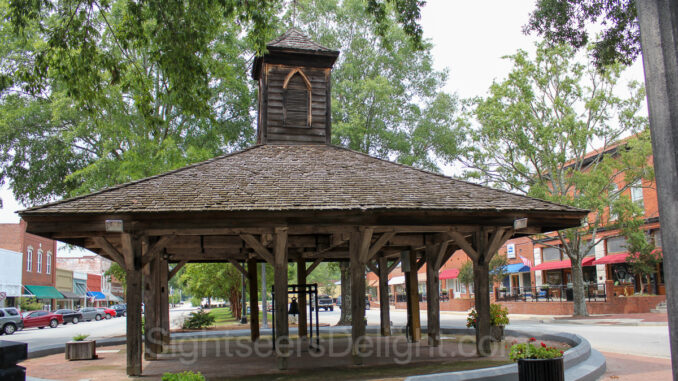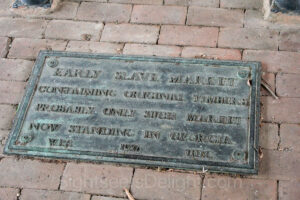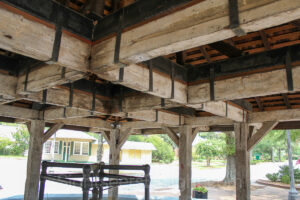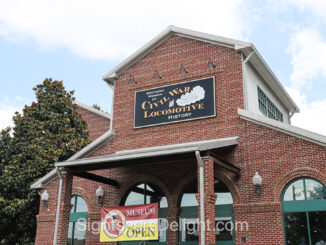
LOUISVILLE, Ga. — The small town of Louisville today might seem like little more than a blip on the map. But, by the end of the 18th century, Louisville was an important city in Georgia.
The town was laid out in 1786 as a prospective location for the state’s capital and served in that capacity from 1794 or 1796 until about 1806 — it was the state’s third capital, but first permanent location. The city was named in honor of French King Louis XVI as a show of gratitude for his support during the Revolutionary War.
 In the center of town stands the Old Market, which was the hub of the city’s commerce and stood at the convergence of roads to Augusta, Savannah and Georgetown, according to a marker near the structure. Merchants would sell household goods, food and (sadly) slaves. Today, it’s a poignant reminder of antebellum Georgia and a remarkably preserved historic structure.
In the center of town stands the Old Market, which was the hub of the city’s commerce and stood at the convergence of roads to Augusta, Savannah and Georgetown, according to a marker near the structure. Merchants would sell household goods, food and (sadly) slaves. Today, it’s a poignant reminder of antebellum Georgia and a remarkably preserved historic structure.
“It’s the focal point of our town,” the city manager told The Associated Press in 1996.
“On market days, when the crowds gather from the surrounding plantations of Jefferson to shop in the village stores, when the circus comes to town or when the campaign orator improves the opportunity of court week to stir the echoes of the stump, it seems to wear something of the old time look and to be dreamily reminiscent of an interest which it once attracted,” Lucian Lamar Knight wrote in Georgia’s Landmarks, Memorials, and Legends (1913).
 The building, according to most estimates, was probably built during the 1790s (likely 1795-1798). For years, many historians thought the structure was built as early as 1758.
The building, according to most estimates, was probably built during the 1790s (likely 1795-1798). For years, many historians thought the structure was built as early as 1758.
“During the Great Depression of the 1930s, the Works Progress Administration, created as part of U.S. president Franklin D. Roosevelt’s New Deal, performed valuable service by revitalizing a dilapidated portion of the town’s Market House, which allegedly was the site of a slave market during the antebellum period,” according to the New Georgia Encyclopedia.
The bell hanging inside the Market House was cast in France in 1772. The bell was en route to New Orleans when the ship on which it was traveling was captured by pirates. The bell was later sold in Savannah before making its way to the state capitol in Louisville, where it served as a warning signal for the community.




